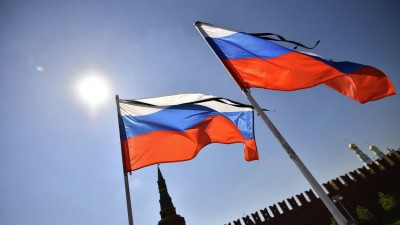Russia’s Military Operation in Syria. Will Russia Deploy Ground Forces?

GR Editor’s Note
While this report provides useful background information on Russia’s, it is largely based on official statements of Russia’s Ministry of Defense.
* * *
Russian Minister of Defense Sergey Shoygu reported on the situation within his ministry to the Russian Parliament. While he did not specify when Russia’s operation in Syria would end. he also ruled out a land operation saying that the conflict is low-level thanks to Russia’s ability to deter escalation.
However, the prospect of a significant Russian ground deployment is one of the major factors deterring Turkey and other ISIS sponsors from intervening in the Syrian war more forcefully.
And just as the Center-2015 exercise in the Central MD [Ministry of Defense] turned out to be a grand rehearsal for the deployment to Syria, so does the planned Caucasus-2016 joint exercise will demonstrate Russia’s capabilities to escalate if needed. Exercise participants will include Ground Forces units from Southern MD, Black Sea Fleet, Caspian Flotilla, and tactical aviation, with the goal of perfecting Russia’s joint warfare doctrine.
The importance of the southern direction is also underscored by the recent MR brigade exercise in Chechnya and by the delivery of Ratnik individual soldier systems to Russian units stationed in Armenia.
However, Syria is not the only hot-spot close to Russia’s borders. Daesh activities in Afghanistan is prompting a response in the form of deploying a motorized rifle regiment to Dushanbe, which suggests the threat of Central Asia destabilization might be more imminent than it appears.
The low hydrocarbon prices do not appear to have impacted Russia’s military modernization plans. While briefing foreign defense attaches, Russian General Staff Chief, General Valeriy Gerasimov said that the current modernization program will be largely complete by 2021, at which point the Russian Armed Forces’ equipment will be 70-100% modern.
As of late 2015, that figure is only 47%. In order to achieve that, the Russian military plans to procure every year 70-100 combat aircraft, 600 armored vehicles, 120 helicopters, up to 30 ships, which means the modernization pace of the past several years will be maintained.
The Russian Federation has been also making progress in quality of its soldiers. The number of contract soldiers has more than doubled to 352 thousand in only three years. That number is to rise to nearly 500 thousand by 2020. The Ground Forces alone formed 8 new brigades, received over 1,000 armored vehicles, and two complete Iskander-M brigades in 2015.
To keep pace with the new weapons, the Russian military is currently placing into operation advanced simulation centers like the combined arms center in Mulino (Nizhniy Novgorod Region), where an entire battalion task force can undergo simultaneous training on advanced 3D simulators which greatly reduces the wear-and-tear on heavy equipment and makes it possible for soldiers to attain a high level of proficiency prior to engaging in field exercises.
Effective deterrence noted by Shoygu also relies on constant demonstration of capabilities, which the Russian military is continuing to provide.
A Southern MD missile brigade is scheduled to stage a complex exercise including a 1,000km deployment using various means of transport, followed by simulated missile launches from the Kapustin Yar training area in Astrakhan Region. This exercise is no doubt intended to demonstrate the ability to deploy an Iskander brigade to Syria at a moment’s notice should the Turkish Army attempt an invasion of Syria.
And, as if to underscore that the Iskander does not represent the ceiling of Russia’s escalation capability, Verkhoturye SSBN launched a Sineva SLBM from the Barents Sea, and another Yars-equipped mobile ICBM regiment became operational in Kozelsk.

